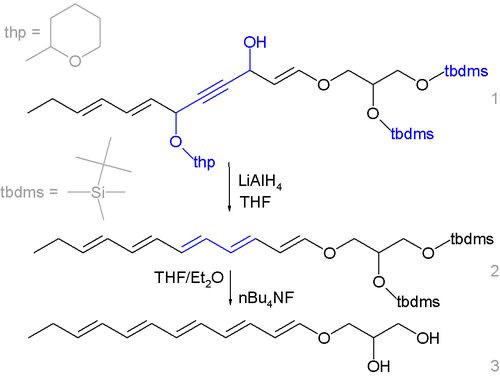The Whiting reaction is an organic reaction converting a propargyl diol into a diene using lithium aluminium hydride.[1]

This organic reduction has been applied in the synthesis of fecapentaene, a suspected cause of colon cancer:[2]
Protecting groups are tetrahydropyranyl and TBSMS; the final step is deprotection with tetra-n-butylammonium fluoride.
References[edit]
- ^ Nayler, P.; Whiting, M. C. J. Chem. Soc. 1954, 4006–09.
- ^ Synthesis of crystalline (.+-.)-fecapentaene Hans Rudolf Pfaendler, Franz Karl Maier, and Sonja Klar J. Am. Chem. Soc.; 1986; 108(6) pp. 1338–39. (doi:10.1021/ja00266a057)

Well, that’s interesting to know that Psilotum nudum are known as whisk ferns. Psilotum nudum is the commoner species of the two. While the P. flaccidum is a rare species and is found in the tropical islands. Both the species are usually epiphytic in habit and grow upon tree ferns. These species may also be terrestrial and grow in humus or in the crevices of the rocks.
View the detailed Guide of Psilotum nudum: Detailed Study Of Psilotum Nudum (Whisk Fern), Classification, Anatomy, Reproduction